
SAR AND QSAR IN ENVIRONMENTAL RESEARCH
Scope & Guideline
Unveiling the Science Behind Environmental Health.
Introduction
Aims and Scopes
- QSAR Modeling:
The journal emphasizes the use of QSAR modeling techniques for predicting the biological activity of chemical compounds, toxicity, and environmental impact based on their chemical structure. - Molecular Dynamics Simulations:
It incorporates molecular dynamics simulations to understand the interactions at a molecular level, aiding in the design of new compounds and the prediction of their behavior in biological systems. - Toxicity Predictions:
A core area of research involves predicting the toxicity of various substances, including pharmaceuticals and environmental pollutants, to aquatic and other biological species. - Machine Learning Integration:
The journal explores the integration of machine learning techniques with traditional QSAR approaches to enhance predictive accuracy and model robustness. - Multi-target Drug Discovery:
Research often focuses on identifying multi-target inhibitors for diseases, utilizing computational methods to streamline drug discovery processes. - Environmental Risk Assessment:
It addresses the environmental implications of chemical substances, offering insights into their potential risks and effects on ecosystems.
Trending and Emerging
- Machine Learning and AI in QSAR:
There is a growing trend in applying machine learning and artificial intelligence to enhance QSAR modeling, improving the accuracy and efficiency of predictions related to chemical activities and toxicity. - Integrated Computational Approaches:
Emerging studies are increasingly combining various computational techniques, such as molecular docking, dynamics simulations, and QSAR, to provide a more holistic understanding of chemical interactions and biological effects. - Environmental Impact of Pharmaceuticals:
Research focusing on the environmental impact of pharmaceuticals and personal care products is on the rise, highlighting the need for effective risk assessment and management strategies. - Natural Product-Based Inhibitors:
The exploration of natural compounds as potential inhibitors for various biological targets is gaining momentum, reflecting an interest in sustainable and eco-friendly alternatives in drug discovery. - Predictive Toxicology and Ecotoxicology:
There is a notable increase in publications addressing predictive toxicology and ecotoxicology, which utilize QSAR models to assess the effects of chemicals on various species and ecosystems.
Declining or Waning
- Traditional SAR Approaches:
Traditional SAR methodologies are becoming less dominant as researchers increasingly favor more advanced computational techniques, such as machine learning and deep learning models, which offer better predictive capabilities. - Basic Toxicity Assessments:
There has been a decline in the number of publications focusing solely on basic toxicity assessments without the integration of advanced modeling techniques, as the field moves towards more comprehensive and predictive approaches. - Single-target Inhibitor Studies:
Research concentrating on single-target inhibitors is waning in favor of multi-target approaches that can address complex biological systems more effectively.
Similar Journals
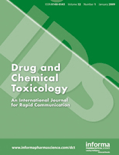
DRUG AND CHEMICAL TOXICOLOGY
Innovating research for a healthier tomorrow.Drug and Chemical Toxicology is a well-respected journal in the fields of toxicology, pharmacology, and public health, published by Taylor & Francis Ltd. Since its inception in 1978, this journal has diligently explored the effects and mechanisms of chemical exposures on health and the environment, fulfilling a crucial role in advancing scientific understanding and safeguarding public health. The journal is indexed across prestigious databases and features an impressive array of articles categorized within the Q2 and Q3 quartiles across various categories in 2023, reflecting its significance in Chemical Health and Safety as well as Environmental and Occupational Health disciplines. With an extensive reach and a focus on interdisciplinary research, Drug and Chemical Toxicology offers a rich repository of original research, reviews, and methodological advancements, catering to a diverse audience of researchers, professionals, and students dedicated to the betterment of safety and health standards. Although not an open-access publication, its articles are widely accessible to the academic community, ensuring that critical innovations and insights are shared for the greater good.
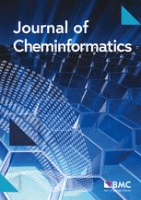
Journal of Cheminformatics
Pioneering the integration of chemistry and technology.Journal of Cheminformatics, published by BMC, is a premier open-access journal that has been a cornerstone of cheminformatics research since its inception in 2009. With an ISSN of 1758-2946, this journal operates from the heart of the United Kingdom, providing a dynamic platform for disseminating high-quality, peer-reviewed articles that explore the integration of computer science with chemistry. The journal proudly stands in the prestigious Q1 category across multiple disciplines, including Computer Graphics, Computer-Aided Design, and Library and Information Sciences, showcasing its exceptional impact in the fields of cheminformatics and computational chemistry. Additionally, it ranks impressively in various Scopus categories, with notable placements such as #7 in Library and Information Sciences and #15 in Physical and Theoretical Chemistry, demonstrating its significance to the academic community. As a leader in open-access publishing, the Journal of Cheminformatics ensures that cutting-edge research and innovations are freely accessible to researchers, professionals, and students alike, fostering collaboration and advancement in this rapidly evolving field.
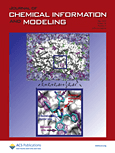
Journal of Chemical Information and Modeling
Exploring the Nexus of Chemistry and Data Science.Journal of Chemical Information and Modeling is a premier scholarly publication dedicated to advancing the fields of chemical engineering, chemistry, and computer science applications. Published by the reputable American Chemical Society, this journal significantly contributes to the scientific community through innovative research and critical reviews that facilitate the understanding and application of chemical information. With an impressive impact factor and a distinguished ranking in multiple categories—such as Q1 in Chemical Engineering and Q1 in Chemistry—the journal is an indispensable resource for researchers and professionals alike. As open access is not currently available, the journal preserves a selective distribution model that ensures high-quality content is accessible to a dedicated audience. By exploring the intersections of data science and chemical informatics, the Journal of Chemical Information and Modeling fosters interdisciplinary collaboration and innovation, positioning itself as a leader in its field. Researchers, professionals, and students are encouraged to engage with this influential platform for the latest developments in chemical information science.
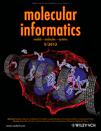
Molecular Informatics
Bridging Computational Techniques with Biological InnovationMolecular Informatics is a prestigious journal published by WILEY-V C H VERLAG GMBH, dedicated to advancing the fields of computational analysis and molecular modeling. As a key resource in the realms of Computer Science Applications, Drug Discovery, Molecular Medicine, Organic Chemistry, and Structural Biology, this journal is recognized for its significant contributions and is ranked in the Q2 and Q3 categories across multiple disciplines, positioning it among the leading journals for researchers and academics. With an impressive track record since its inception in 2010 and converging its contributions until 2024, Molecular Informatics aims to bridge the gap between computational techniques and biological applications, promoting interdisciplinary collaboration and innovation. Accessible to a global audience, the journal reflects a commitment to advancing science through open access options, making cutting-edge research available to students, professionals, and decision-makers alike. This journal serves as an indispensable platform for disseminating high-quality research and fostering the development of new theoretical and practical frameworks in molecular informatics.

ARCHIVES OF TOXICOLOGY
Uncovering Insights, Shaping SafetyARCHIVES OF TOXICOLOGY is a prestigious journal published by Springer Heidelberg, dedicated to advancing research in the field of toxicology and related disciplines. With a distinguished history dating back to 1930, this journal has continuously provided vital insights and groundbreaking studies, making it a cornerstone in the areas of health, toxicology, and medicine. Recognized for its high impact, it occupies a top-ranking position in Scopus, with remarkable quartile placements in 2023, categorizing it as Q1 in Health, Toxicology and Mutagenesis, and Q1 in Medicine (Miscellaneous). The journal highlights critical research and innovative methodologies, appealing to a diverse audience of researchers, professionals, and students committed to understanding the complexities of toxic substances and their implications for public health and environmental safety. The journal does not currently offer open access, allowing for a more traditional but rigorous peer-review process that ensures the quality and integrity of every published article. Join the global discourse in toxicological science with ARCHIVES OF TOXICOLOGY, where every contribution furthers the understanding of safety and toxicity in our world.
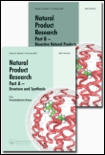
NATURAL PRODUCT RESEARCH
Advancing Knowledge in Natural Product ScienceNATURAL PRODUCT RESEARCH is a distinguished journal published by Taylor & Francis Ltd, dedicated to advancing the field of natural product science through the dissemination of high-quality research. Established in 2003, this journal serves as a pivotal platform for scholars in Analytical Chemistry, Biochemistry, Organic Chemistry, and Plant Science, boasting an impressive categorization including Q2 in Plant Science and Q3 in the other disciplines for 2023. With a current Scopus ranking that highlights its significance within various scientific communities, NATURAL PRODUCT RESEARCH reflects the complexities and innovations associated with natural compounds and their applications. Researchers, professionals, and students will find valuable insights and breakthroughs that contribute to the understanding of bioactive compounds and their roles in health and environmental sustainability. Access options are available, ensuring that the latest findings are accessible to a global audience. As this journal continues to publish until 2024, it remains an essential resource for those at the forefront of natural product research.
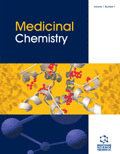
Medicinal Chemistry
Advancing drug discovery through cutting-edge research.Medicinal Chemistry is a prestigious journal published by Bentham Science Publishers Ltd, dedicated to advancing the field of drug discovery and development. Established in 2005 with a converged publication timeframe extending to 2024, this journal serves as a vital resource for researchers and professionals interested in the intricate processes of medicinal chemistry, pharmacology, and toxicology. With an ISSN of 1573-4064 and an E-ISSN of 1875-6638, it has established a notable presence in the academic community, currently positioned in Q3 of Drug Discovery category according to the 2023 quartiles. The journal's ranking in Scopus places it at 90 out of 157 in its field, showcasing its impact and relevance, with a percentile standing of 42. Although the journal is not open access, it continues to provide insightful articles and research findings that contribute significantly to the understanding and innovation in medicinal chemistry. Based in the United Arab Emirates, Medicinal Chemistry is committed to disseminating high-quality research that shapes the future of drug formulation and therapeutic advancement.
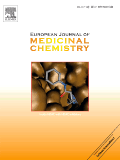
EUROPEAN JOURNAL OF MEDICINAL CHEMISTRY
Shaping Therapeutic Strategies with High-Quality Research.European Journal of Medicinal Chemistry, a premier publication by Elsevier France-Editions Scientifiques Médicales Elsevier, has been at the forefront of advancing medicinal chemistry since its inception in 1974. With an impressive impact factor and ranking in the Q1 quartile across multiple categories including Drug Discovery, Medicine (miscellaneous), Organic Chemistry, and Pharmacology, this journal delivers cutting-edge research and reviews that are vital for researchers and professionals in the field. The journal’s scope encompasses the design, synthesis, and evaluation of biological activity of bioactive compounds, making it a critical resource for those looking to innovate in drug development and therapeutic strategies. Although currently not open access, subscribers can benefit from its diverse range of high-quality articles, ensuring the dissemination of knowledge in the ever-evolving landscape of medicinal chemistry. The European Journal of Medicinal Chemistry continues to play a pivotal role in shaping the future of pharmacological research and its application, thus appealing to an audience dedicated to making impactful scientific contributions.

CHEMICAL RESEARCH IN TOXICOLOGY
Bridging chemistry and toxicology for impactful solutions.Chemical Research in Toxicology is a premier journal published by the American Chemical Society, dedicated to advancing the understanding of toxicological effects associated with chemical substances. Since its inception in 1988, this esteemed journal has maintained a robust impact factor, ranking in the Q1 quartile for both Medicine (miscellaneous) and Toxicology as of 2023, reflecting its significance and influence in the fields of pharmacology and toxicology. With an impressive Scopus ranking at #16 out of 133 in the Toxicology category, it serves as a vital resource for researchers, professionals, and students seeking cutting-edge insights and scholarly articles that bridge the gap between chemistry and toxicological science. Although not an open-access publication, it continues to provide comprehensive analyses and original research that inform safe chemical practices and regulatory policies, further enhancing its role in public health and safety.
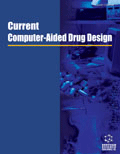
Current Computer-Aided Drug Design
Pioneering Computational Strategies for Effective Drug DesignCurrent Computer-Aided Drug Design, published by BENTHAM SCIENCE PUBL LTD, is a pivotal journal dedicated to the integration of computer-aided methodologies within the drug design process. With its ISSN 1573-4099 and E-ISSN 1875-6697, this journal serves as a vital resource for researchers, professionals, and students interested in advancing the fields of pharmacology and molecular medicine. Operating under a framework that spans from 2006 to 2024, it aims to foster innovative approaches and discussions surrounding drug design strategies, computational techniques, and the therapeutic potential of novel compounds. Although it currently holds a Q4 rating in Drug Discovery and Molecular Medicine as well as a Q3 in Medicine (miscellaneous) within the 2023 category quartiles, the journal continues to enhance its visibility and relevance in the academic community. Its Scopus rankings reflect its commitment to quality research, positioning it in the context of drug discovery and molecular studies. As the field of drug design evolves, Current Computer-Aided Drug Design remains an essential platform for disseminating cutting-edge findings and facilitating collaboration among specialists aiming for significant advancements in drug development.